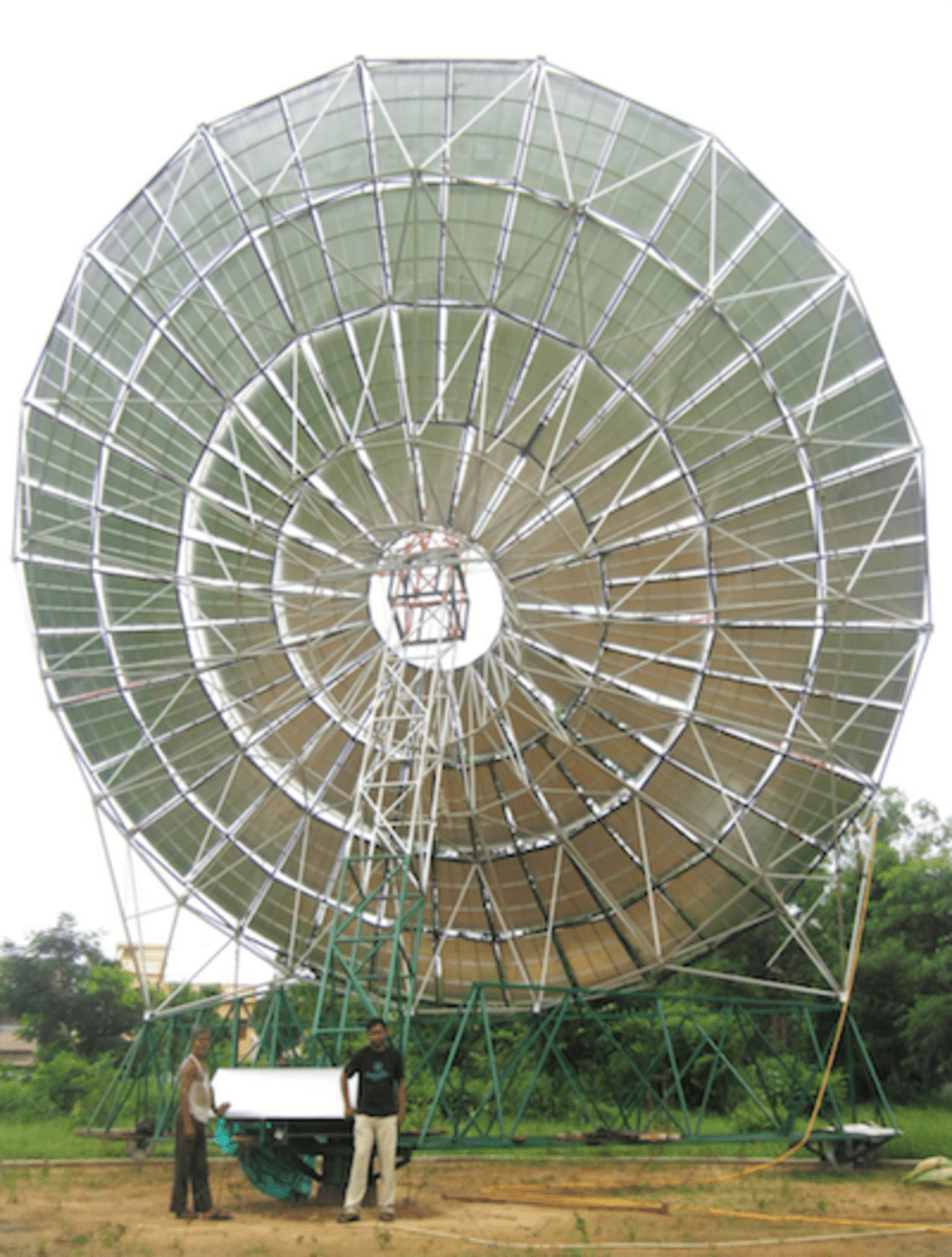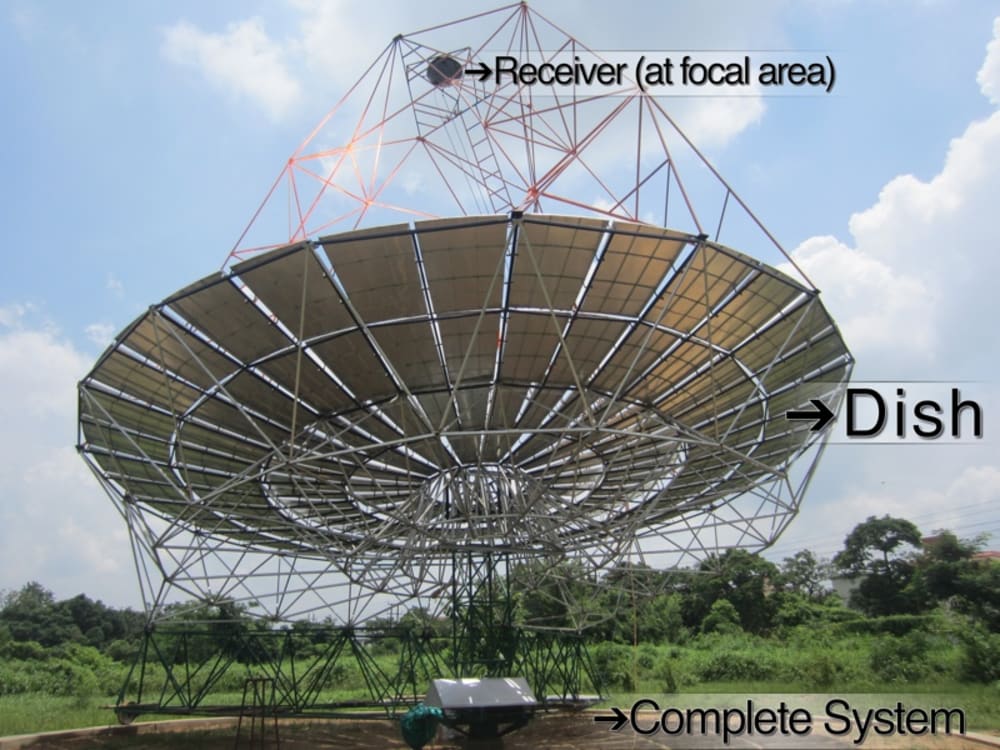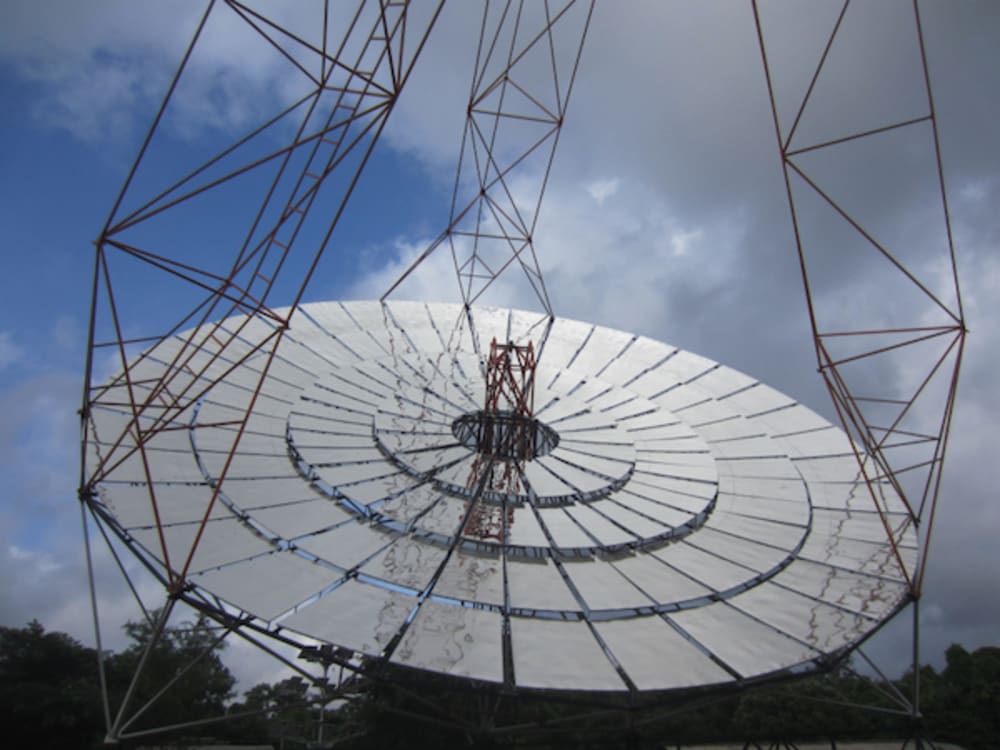In view of growing demand for energy in developing countries like India, increase in global pollution and burden of importing fossil fuels, it has become inevitable to utilize the abundance of renewable sources. India, lying in the tropical region, is blessed with high solar-insolation. Hence Solar Energy can provide a long term sustainable solution to this energy crisis.
Concentrating Solar Heat (CSH) systems are one of the best sources for exploiting solar energy. Basically there are 3 types of CSH systems:
1. Central receiver/Solar tower
2. Parabolic trough (reaches to approx. 400°C)
3. Parabolic dish (reaches to approx. 750°C)
Each system has its own advantages & disadvantages. This project is aimed at designing Parabolic dish concentrator system.
The importance of CSH technologies arises from the fact that two-third of industrial end energy consumption is thermal energy. One-third of industrial process heat demand is below 200°C, which suits the integration of solar concentrator systems in process heat applications.
Dish systems have potential to replace every application requiring heat energy under 600-750°C like process heat generator for industries, power-generation, refrigeration, boilers, milk processing, sugar industries, agro industries, chemical processing, boilers, water heating, metallurgy and many more.
In spite of such a great potential of the dish systems, we are not finding any of its applications around us. The main barrier is the cost involved in making the dish. The rise in the costs is because of that as the size of the dish increases, the wind loads (strongest enemy for structures) also. Till now, the design of the dish is such that it always tries to fight against the wind. In this approach, only way to go is that by using thicker/stronger reflector surface which then needs a heavy supporting structure which are the main reasons for high rise in the price.
The novelty of solwedISH is that it doesn't try to go against the wind but rather goes with the wind. This design approach allows us to use thin reflector and lighter supporting structure which leads to drastic reduction in cost of the dish.
Another problem is that dishes are generally supported from centre. This approach demands dish to be lifted to a height minimum equal to its radius. In this case, cranes and heavy lifting machinery becomes indispensable. Not to forget that solar systems work the best in open areas and desert conditions, the transport of heavy lifting machinery becomes expensive and complicated thereby installation & erection costs become significant.
The novelty of solwedISH system dispenses the necessity of the heavy lifting machinery as dish could be kept on the ground, no matter the size of the dish without any sacrifice in the performance. These two improvements, one is reducing wind load by go with the wind approach and the other, dispensation of the heavy lifting machinery by ground-hugger approach reduces the system costs considerably without any sacrifice in the performance. That supports why the project is titled as Low specific cost dish system but not low cost system.
Video
Like this entry?
-
About the Entrant
- Name:Madan Mohan
- Type of entry:individual
- Software used for this entry:STAADPro, Solidworks
- Patent status:pending








